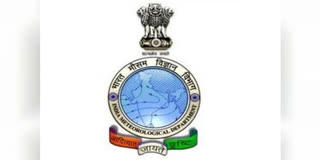Economic Liberalisation: How this very day in 1991 sealed India's destiny
The Indian economy was on the verge of collapse when then Prime Minister PV Narasimha Rao, along with then finance minister Manmohan Singh, decided to completely change the narrative for India from being a ‘state-controlled economy’ to ‘liberalised economy’.

Hyderabad: In early 1991, the Indian economy was on the brink of a complete breakdown. The country could have been barred from any fresh imports as foreign exchange reserves had fallen to less than $1 billion (down over 75% from a year ago) -- enough to pay for only two weeks of imports. The Reserve Bank of India (RBI) had to mortgage India’s gold reserves with Bank of England to avail $200 million as an urgent financial assistance to deal with the situation.
Internally, the country was under the grip of licence raj -- a term used to refer to the intense regulation of the private sector between 1947 and early 1990s.
Under licence raj, also known as permit raj, a company had to take approvals from up to 80 agencies in order to set up a business. Private players could manufacture goods only with official licences. The state would decide what was produced, how much, at what price and what sources of capital were to be used. The government also prevented firms from laying off workers or closing factories.
Then there were multiple and complex systems of control on both import and export fronts. The broader policy tended towards ‘protectionism’, with a strong emphasis on import substitution (meaning that India needs to rely on internal markets for development, not international trade).
The result: High unemployment rate, negative growth, a fragile manufacturing sector, fiscal deficit close to 8.5% of GDP (gross domestic product), current account deficit close to 3.5% of GDP and retail inflation rate of close to 13%.
It was the same year when P. V. Narasimha Rao took over as Prime Minister in June and roped in Manmohan Singh as finance minister. Within a month of joining office, the duo realised that India was facing an unprecedented crisis and the economy could collapse at any moment. Understanding the gravity of the situation, Rao backed Singh to initiate exactly what the country needed that time – a change of narrative for India from being a ‘state-controlled economy’ to ‘liberalised economy’.
“Let the whole world hear it loud and clear. India is now wide awake. We shall prevail. We shall overcome,” Manmohan Singh said at his historic budget speech on 24 July 1991 – exactly 29 years ago.
Budget reforms
Singh’s idea was to increase the degree of competition between companies in the domestic market so that there are “adequate incentives for raising productivity, improving efficiency and reducing costs”. To achieve that, Singh simply eliminated the Permit Raj and freed companies from quantitative restrictions.
“We have announced important changes in the industrial policy which will bring significant measure of deregulation in the domestic sector,” Singh said in the speech.
He also called for the Indian industry to be exposed to competition from abroad.
“As a first step in this direction, the government has introduced changes in import-export policy, aimed at a reduction of import licensing, vigorous export promotion and optimal import compression,” he said.
Read more:India's financial system sound, lenders should not be extremely risk averse: RBI Guv
As a result, imports of plants and machinery as well as consumer goods became much easier. Foreign companies were also allowed to enter joint ventures with domestic companies and in due course set up 100% subsidiaries – the things which sound so ‘usual’ today that it’s hard to imagine that they were not allowed before 1991.
Also, noting the IT sector’s “vast unexploited potential for growth”, Singh announced special tax incentives for export of services. This concession enabled Indian software companies to become more cost-effective, thereby kick-starting the IT boom in the country.
It was also in 1991 when the Securities and Exchange Board of India (SEBI) became the sole markets regulator, with all listed companies directed to comply with its rules and regulations.
Singh also called for the transfer of complete statutory powers to SEBI for regulating the affairs of the stock exchanges, and protecting the rights of investors and preventing trading malpractices.
Interestingly, Singh also in the same budget increased the corporate tax rate to 45% from 40%, while retaining existing personal income tax slabs. Subsidies on several necessities, including sugar, was withdrawn, while prices of fertilizers, cooking gas and petroleum were also increased.
Long-Lasting Impact
It was the result of various such measures that by the time Manmohan Singh presented his second budget as finance minister in February 1992, a sharp moderation was seen in fiscal deficit and inflation, while foreign reserves improved.
The bigger victory was the trajectory of growth which India saw in the subsequent years. If there was an ‘ease of doing business index’ that time, the then Indian government would have had managed a ‘jump’ that they could have flaunted for years.
The landmark Union budget 1991 paved way for India’s New Economic Policy, which had a fresh take on every economic aspect of the country from foreign trade, foreign direct investment, exchange rate to industry management and fiscal discipline, etc.
Notably, the success of the New Economic Policy can be assessed from the fact that no subsequent government, irrespective of the ruling party in power, in almost 30 years has changed the basic fabric of the idea behind the policy -- liberalization, privatization and globalization – and have been building their respective narratives on the same economic principles.
(ETV Bharat Report)






